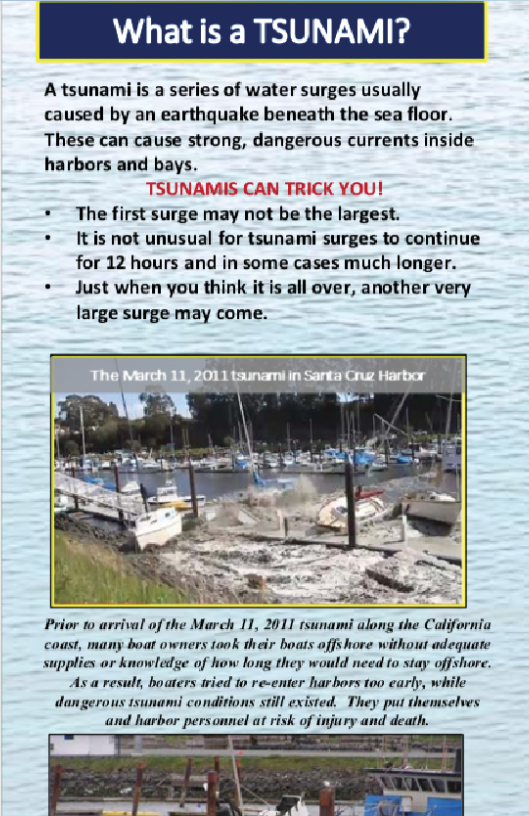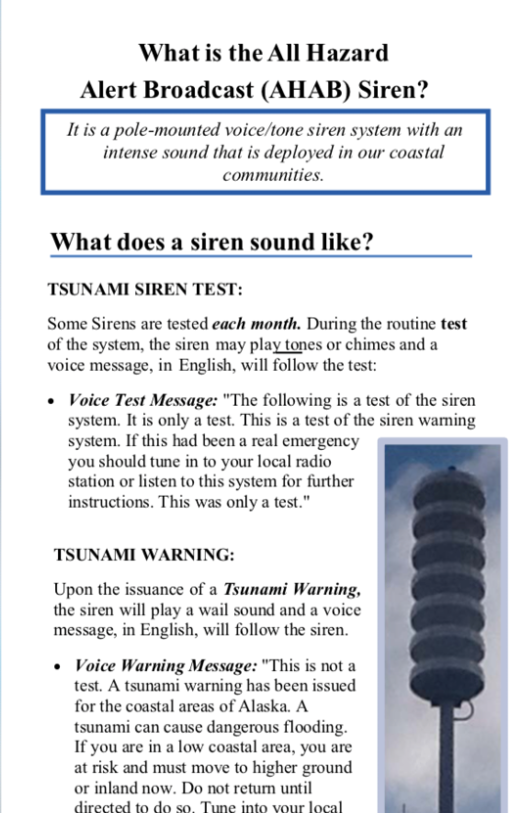Coastal Alaska lives with the most serious tsunami risk in the United States. Historically, tsunamis generated by earthquakes in Alaska have caused damage and loss of life along the West Coast and across the Pacific. Here in Alaska, though, tsunamis generated by nearby earthquakes represent “near-field” hazards. In other words, people have minutes rather than hours to reach safety.
What can I do today?
– Be familiar with the tsunami warning signs. A rapid rise or fall in coastal waters and a large earthquake are both signs to an approaching tsunami.
– Know the location of your local evacuation site. Most coastal communities have a designated area on high ground that the community will meet, e.g.: a school.
– Know your community’s warning siren or method of letting people know a tsunami is coming. DO NOT go to the water to watch the tsunami come in!

2025 Alaska Tsunami Preparedness Week TBD!
#TsunamiPrepAK and #TsunamiPrep
NOAA NWS National Tsunami Warning Center Website
Current and past tsunami alerts and definitions as issued by the National Tsunami Warning Center.
– Maps showing how tsunamis could affect you
– Educational resources for tsunamis
– Tsunami Awareness information
Alaska Tsunami Brochures
 |
 |
UAF Earthquake Center Tsunami Website
Learn about tsunami mapping projects, including potential flooding and pedestrian evacuation times, as well as historic tsunamis and mitigation projects.
National Tsunami Hazard Mitigation Program website.
How to Participate
Information for individuals, schools and many types of organizations
Tsunami Outreach Resources
Manuals, posters, & much more
Who is Participating?
Lists by county, area, & category
Share Your Activities
Your photos, videos, and stories of tsunami preparedness week

